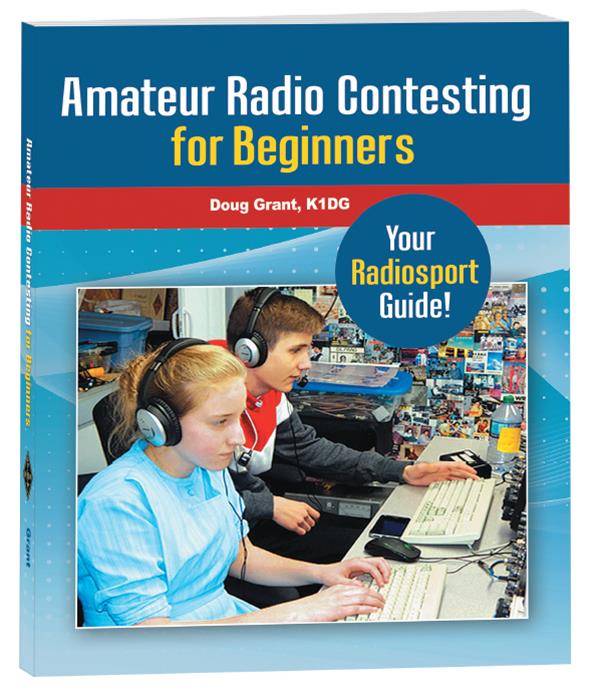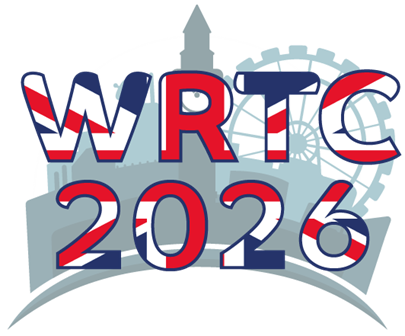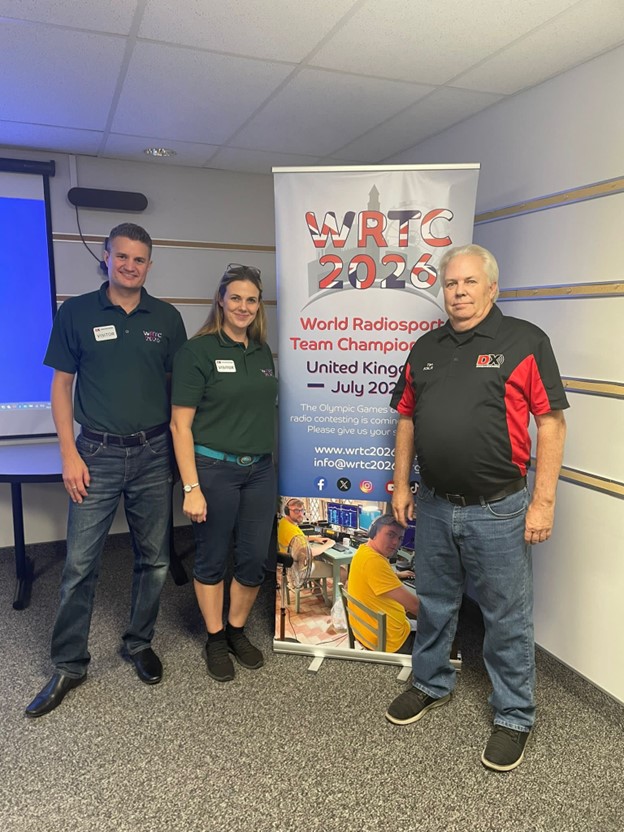Guide to October 2024 Ham Radio Contests
While contesters the world over await the SSB portion of the CQ World Wide DX Contest at the end of the month, don’t forget that there’s plenty to do on the air leading up to this mega-event.
Sis-Boom-Bah
With college football frenzy in the air, we’d like to give a special shout out to collegiate competitors this October who will be more concerned with hamming than pigskins…gray lines than goal lines…station grounding than intentional grounding. All of us at OnAllBands wish the best of luck to the students, faculty, and alumni who will be participating in the Collegiate QSO Party October 5, 0000Z to October 6, 2359Z.
From the contest website, “The Collegiate QSO Party is an operating event focused on amateur radio clubs at colleges and universities around the world. Each Fall, the Collegiate QSO Party provides an opportunity for clubs to demonstrate amateur radio to new members, engage with alumni, and promote activity throughout college and university communities.”
This year’s roster of competitors who will be trying to mitigate interference (a 15-yard penalty in the gridiron world, but even a bigger annoyance in radiosport!) includes teams from Missouri University of Science and Technology, University of Central Florida, University of South Florida, University of Florida, Milwaukee School of Engineering, Oregon State University, Michigan State University, Virginia Tech, St. Louis University, University of Cincinnati, Irvine Valley College, and others.
“This event is open to all radio amateurs,” per the event’s website. “Points can be earned by individuals, clubs, and collegiate stations. The Collegiate QSO Party encourages alumni to connect with their alma mater and students to network with other schools. New hams are welcome and stations are encouraged to be accommodating to new radio amateurs.”
A Halloween Reminder: Beware of the Wouff-Hong!
In this season of ghosts, goblins, and things that go kerchunk in the night, it behooves contesters everywhere to be wary of the most sinister, medieval —and, frankly, hilarious—of all ham radio legends. Of course we could only be referring to the dreaded Wouff-Hong—a device imagined (with tongue firmly in cheek) by Hiram Percy Maxim, W1AW, to remind amateurs that shoddy operating that runs afoul of accepted etiquette should not be tolerated.
While the first article about the Wouff-Hong, penned by The Old Man himself, appeared 100 years ago, its relevance today in light of DQRMers and other ne’er-do-wells hasn’t waned.
Read more about the Wouff-Hong in this OnAllBands article and about the sharp-pointed, Harry Potteresque-named Rettysnitch (another tool for enforcing decency on the air) in the article, “The Five Types of Operators You Don’t Want to Be.”
For information on the kind of bad actors for which the Wouff-Hong and Rettysnitch were devised, read “Deliberate QRM (DQRM): What is it and What Can be Done About it.”
Finally, enjoy some spooky yarns about spectral transmissions in “DX Files: Tales of the Radio Paranormal” by Mark, K8MSH.
Halloween Operating Event
If you’re looking for something to do on Halloween that doesn’t involve dressing in blue tights and a cape, the Anoka County Radio Club of Anoka, Minnesota, is hosting a Halloween Special Event Station, W0YFZ, October 31, 1400Z-2000Z, 14.250 7.250 7.056 ft8.
Anoka—a northern suburb of the Twin Cities—“is believed to be the first city in the United States to put on a Halloween celebration to divert its youngsters from Halloween pranks,” according to anokahalloween.com. Today, its 17,000 residents proudly call their hometown “The Halloween Capital of the World®.”
The town’s first Halloween celebration was in 1920. The good-natured merriment lives on today with parades and other activities, including the special event station: “Anoka residents can watch their grandchildren or great-grandchildren continue the tradition they started so many years ago,” per the website.
***
Sufficiently scared? Make October the month you shake off your “mic fright,” get on the air, and make some QSOs. Here are a few contests to put on your calendar:
- Oceania DX Contest, Phone: October 5, 0600Z to October 6, 0600Z. The CW portion of the contest runs from October 12, 0600Z to October 13, 0600Z. The contest promotes HF contacts to and from stations in the Oceania region as well as contacts between stations in Oceania. Find complete rules here.
The Oceania DX Contest website offers these words of encouragement to get on the air: “This is the 79th running of the Oceania DX Contest, and with the solar conditions the way they are, we are expecting some big things from all of our contestants this year! Solar conditions are the best they have been in more than a decade, so your opportunity to make contact with stations in Oceania has never been better! We look forward to seeing you all on the air on both weekends and expect many stations from Oceania to be calling CQ Contest looking for your calls!”
- QRP ARCI Fall QSO Party: October 12, 0000Z to 2359Z. The QRP Amateur Radio Club International kicks off autumn in their usual manner—by doing more with less! This club for low-power enthusiasts worldwide sponsors various contests and events that promote QRP operating and related activities, such as building minimalist radios, portable ops, and antenna experimentation. Like much of the club’s activities, its Fall QSO Party (HF CW only) is a test of ingenuity and skill, as operators make QSOs using anywhere from 55 mW or less to 5W.
- Stew Perry Topband Challenge: October 19, 1500Z to October 20, 1500Z. Here’s a popular event 160M fans won’t want to miss. Point value of QSOs depends on the distance between the two stations. Participants are given one point plus another point for each 500km of distance. Points are also multiplied for lower power categories—for both the sending and receiving station. Looking to boost your top band capabilities? Read this article on the effectiveness of the DX Engineering 160M THUNDERBOLT Vertical Antenna.
- ARRL’s EME—50 to 1296 MHz: October 19, 0000Z to October 20, 2359Z. Work as many amateur stations as possible via the earth-moon-earth path on designated frequencies. This portion of the ARRL EME event continues on November 16-17.
- ARRL School Club Roundup: October 21, 1300Z to October 25, 2359Z. This bi-annual event is designed to foster contacts with and among school radio clubs. Participants can exchange QSO information with any amateur radio station, so non-school clubs and individuals are encouraged to participate as well. All amateur bands except 60, 30, 17, and 12 meters are permitted.
- CQ Worldwide DX Contest, SSB: October 26, 0000Z to October 27, 2359Z. This is why they call this time of year Contesting Season! The CQ Worldwide DX Contest is the largest amateur radio contest in the world with over 35,000 participants. The challenge is to make as many contacts with as many DXCC entities and CQ Zones as possible, while competing against the world’s elite contesters. Not into SSB? The CW portion of the contest is November 23-24.
Also check out these State QSO Parties:
- California: October 5, 1600Z to October 6, 2200Z
- Nevada: October 12, 0300Z to October 13, 2100Z
- Arizona: October 12, 1500Z to October 13, 0500Z
- Pennsylvania: October 12, 1600Z to October 13, 0400Z, and October 13, 1300Z to 2200Z
- South Dakota: October 12, 1800Z to October 13, 1800Z
- New York: October 19, 1400Z to October 20, 0200Z
- Illinois: October 20, 1700Z to October 21, 0100Z
***
Ready to upgrade your station for better contesting results? Visit DXEngineering.com for everything you could possibly need to boost your scores:
- Antennas
- Transceivers
- Amplifiers
- Headsets
- Microphones
- DX Engineering Footswitches
- Keys and Paddles
- Coaxial Cable Assemblies
- Receive Antennas
The post Guide to October 2024 Ham Radio Contests appeared first on OnAllBands.



 The Unicom Radio Club (URC) is hosting its inaugural URC DX RTTY Contest to be...
The Unicom Radio Club (URC) is hosting its inaugural URC DX RTTY Contest to be... 


 Read more at RSGB.co.uk
Read more at RSGB.co.uk 






